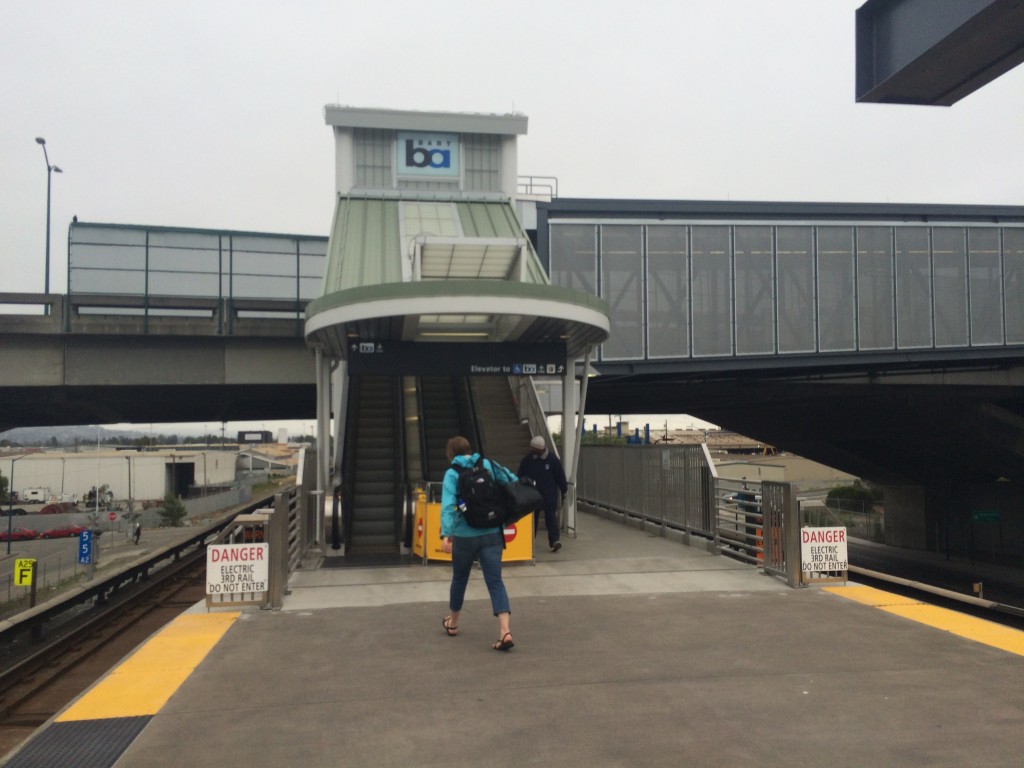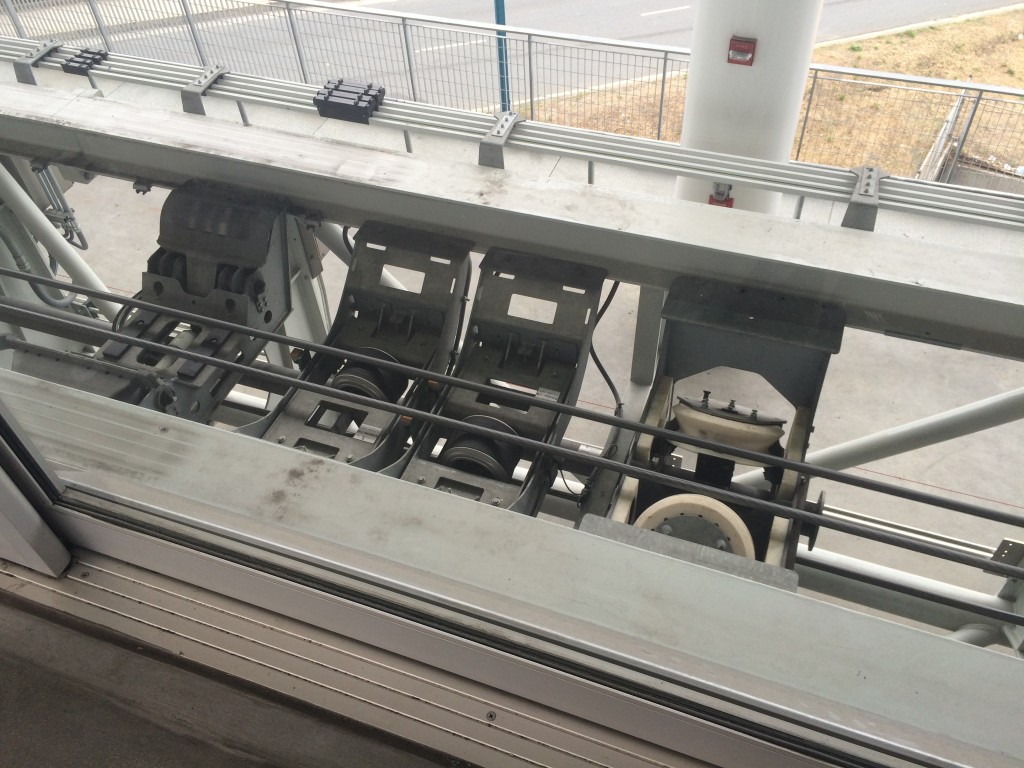It’s been one year since Oakland’s AirBART “people-mover” connector to the airport opened, and so far some good news on the cost front. The San Francisco Chronicle reports that ridership is 37 percent higher than projected, and the $6 one-way fare is covering all operating costs.
But Matier & Ross in the Chronicle also noted today that the revenue won’t repay the capital costs to build the system. Those costs totaled $384 million from federal and state sources, as well as local transportation funds. BART also spent $111 million from sales tax revenue bonds, financed by taxpayers in San Francisco, Alameda and Contra Costa counties.
Still, having farebox revenue cover the full operating cost is pretty much unheard-of with rail projects. And that was the goal of transportation equity advocates who encouraged BART to set the fare so high. They didn’t want AirBART sucking in operating funds from other projects. So BART should be applauded for having a fare that covers these costs and also isn’t scaring away riders.
There’s a lot to like about AirBART, despite my previous criticism of the high fare and decision to make it an elevated rail line rather than a bus-only lane. Having now ridden it, I still wouldn’t take my whole family on it, given the cost, but I am happy to ride it as a solo business traveler.
As you can see in the photo below, the system seamlessly integrates with the BART platform, eliminating the unpleasant wait at street level for the old bus.
But the slow cable car feature is unfortunate. You can see the cable in the photo below. It limits the ride to 23 miles per hour and features a strange midway interruption as the train cars switch to a new cable for the final ride into the airport.
But on the plus side, it’s a smooth ride and it’s nice to be elevated above street level. The views are definitely pleasant.
The bottom line: it’s a nice ride but at a steep price. As long as ridership is covering operating costs, complaints should be minimized. But it will remain an open question: had that money been used to build a speedy bus-only lane service, would ridership be even higher, providing more value to more people? And could the leftover capital funds have been used to improve rail service elsewhere in a more cost-effective manner?
We’ll never know, but in the meantime, the airport and BART have a very visible symbol of luxury transit. And at least for now, it’s paying for itself.
About Ethan Elkind
Leave a Reply Cancel reply
You must be logged in to post a comment.




